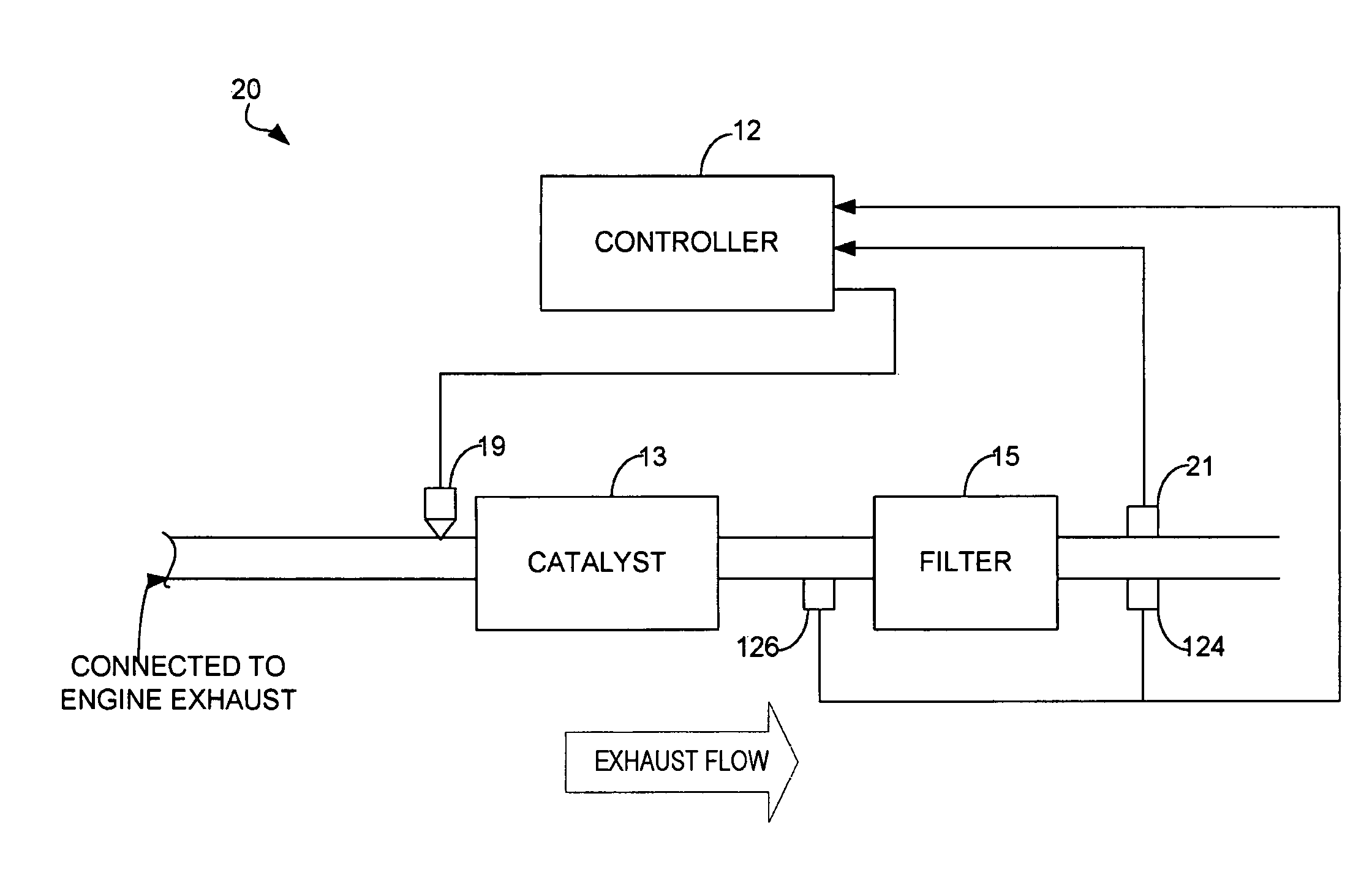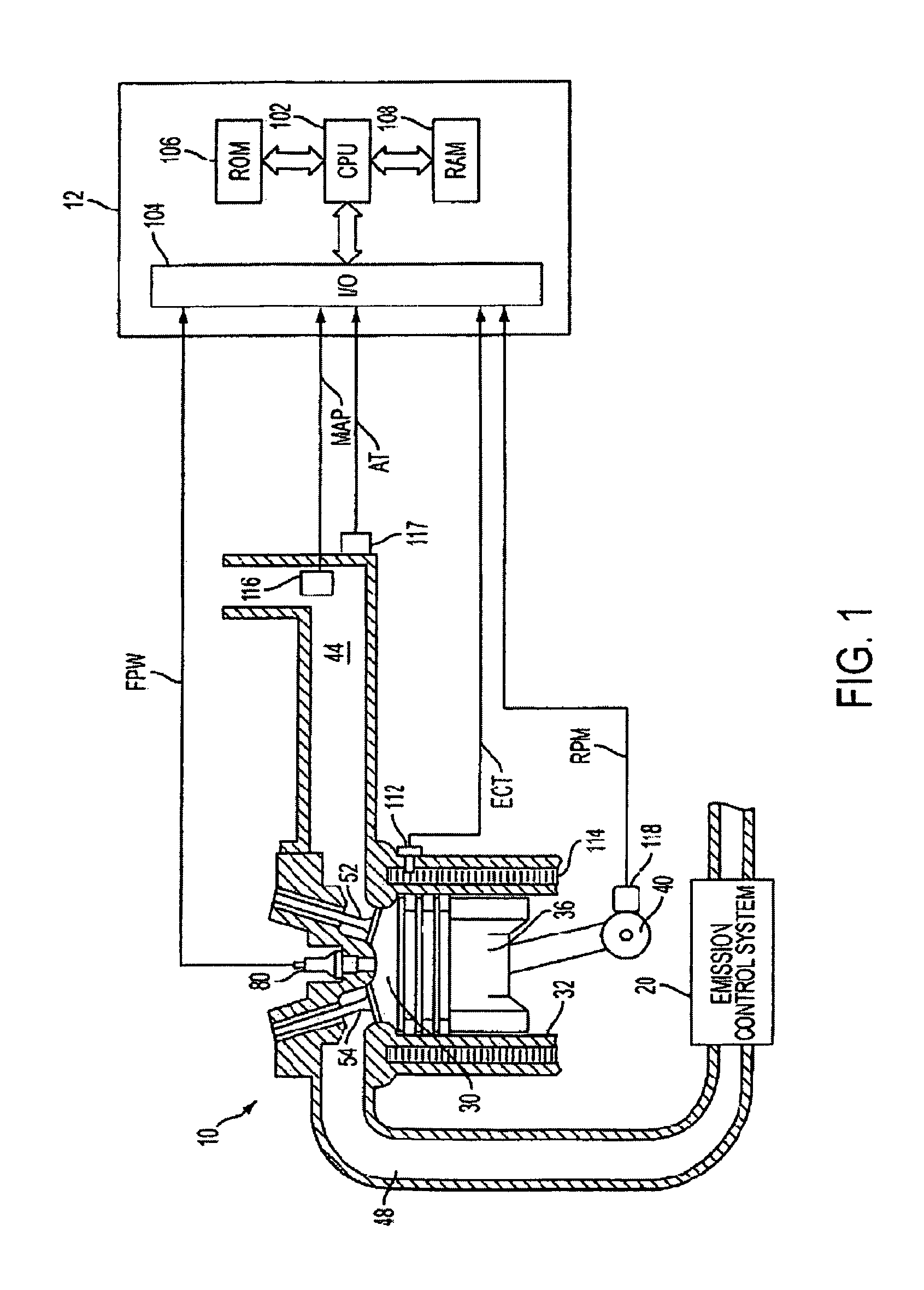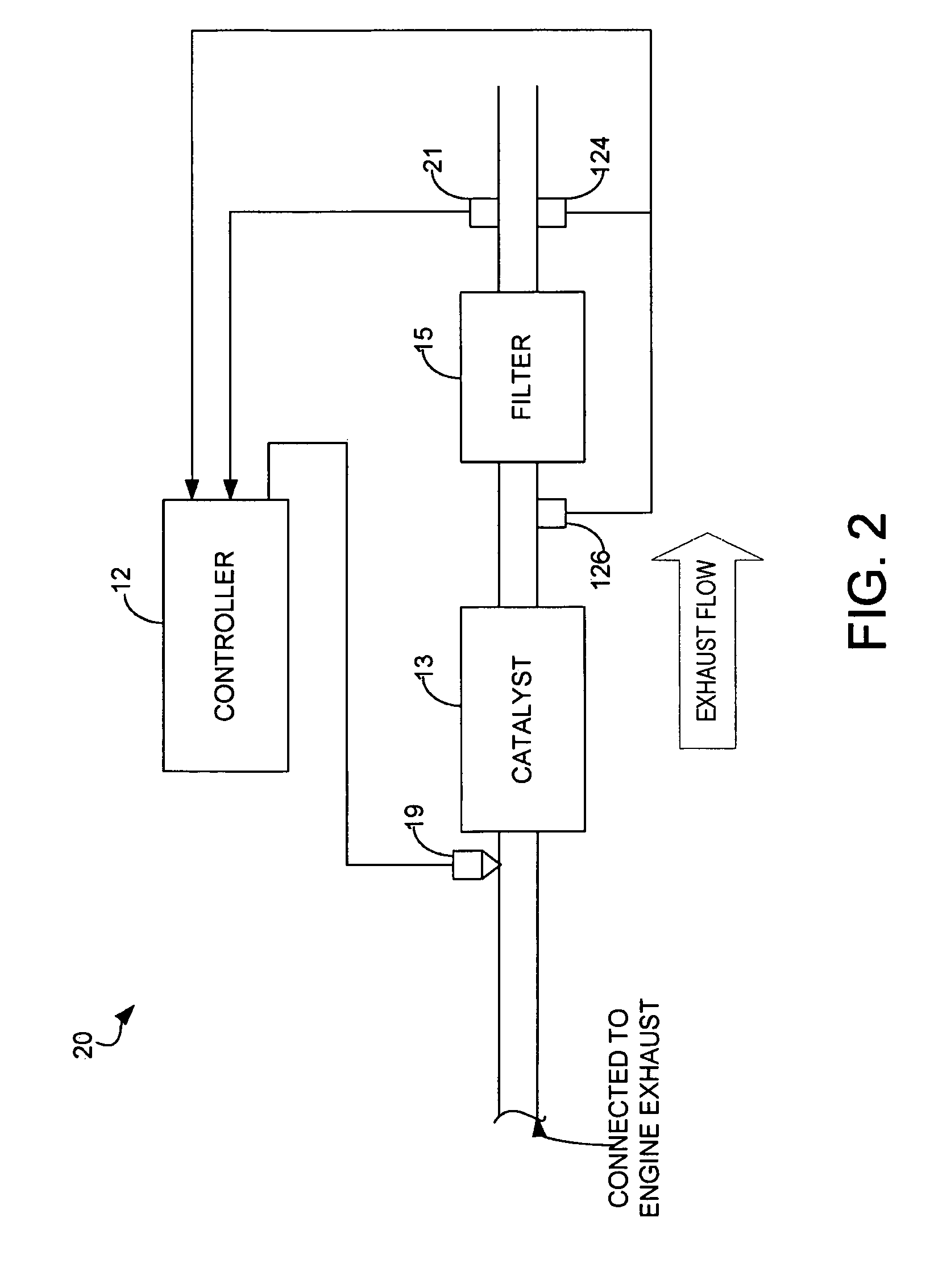Determination of diesel particulate filter load under both transient and steady state drive cycles
a technology of diesel particulate filter and steady-state drive cycle, which is applied in the direction of engines, mechanical equipment, machines/engines, etc., can solve the problems of reducing fuel economy, affecting the operation life of pf regeneration, and degrading pf ceramics
- Summary
- Abstract
- Description
- Claims
- Application Information
AI Technical Summary
Benefits of technology
Problems solved by technology
Method used
Image
Examples
Embodiment Construction
[0011]FIG. 1 is a schematic diagram of an example internal combustion engine 10 in which the disclosed system and method for monitoring soot load of a particulate filter may be implemented. The engine may be a diesel engine in one example.
[0012]Internal combustion engine 10, comprising a plurality of cylinders, one cylinder of which is shown in FIG. 1, is controlled by electronic engine controller 12. Engine 10 includes combustion chamber 30 and cylinder walls 32 with piston 36 positioned therein and connected to crankshaft 40. Combustion chamber 30 is shown communicating with intake manifold 44 and exhaust manifold 48 via respective intake valve 52 and exhaust valve 54. Engine 10 is shown as a direct injection engine with injector 80 located to inject fuel directly into cylinder 30. Fuel is delivered to fuel injector 80 by a fuel system (not shown), including a fuel tank, fuel pump, and high pressure common rail system. Fuel injector 80 delivers fuel in proportion to the pulse widt...
PUM
 Login to View More
Login to View More Abstract
Description
Claims
Application Information
 Login to View More
Login to View More - R&D
- Intellectual Property
- Life Sciences
- Materials
- Tech Scout
- Unparalleled Data Quality
- Higher Quality Content
- 60% Fewer Hallucinations
Browse by: Latest US Patents, China's latest patents, Technical Efficacy Thesaurus, Application Domain, Technology Topic, Popular Technical Reports.
© 2025 PatSnap. All rights reserved.Legal|Privacy policy|Modern Slavery Act Transparency Statement|Sitemap|About US| Contact US: help@patsnap.com



